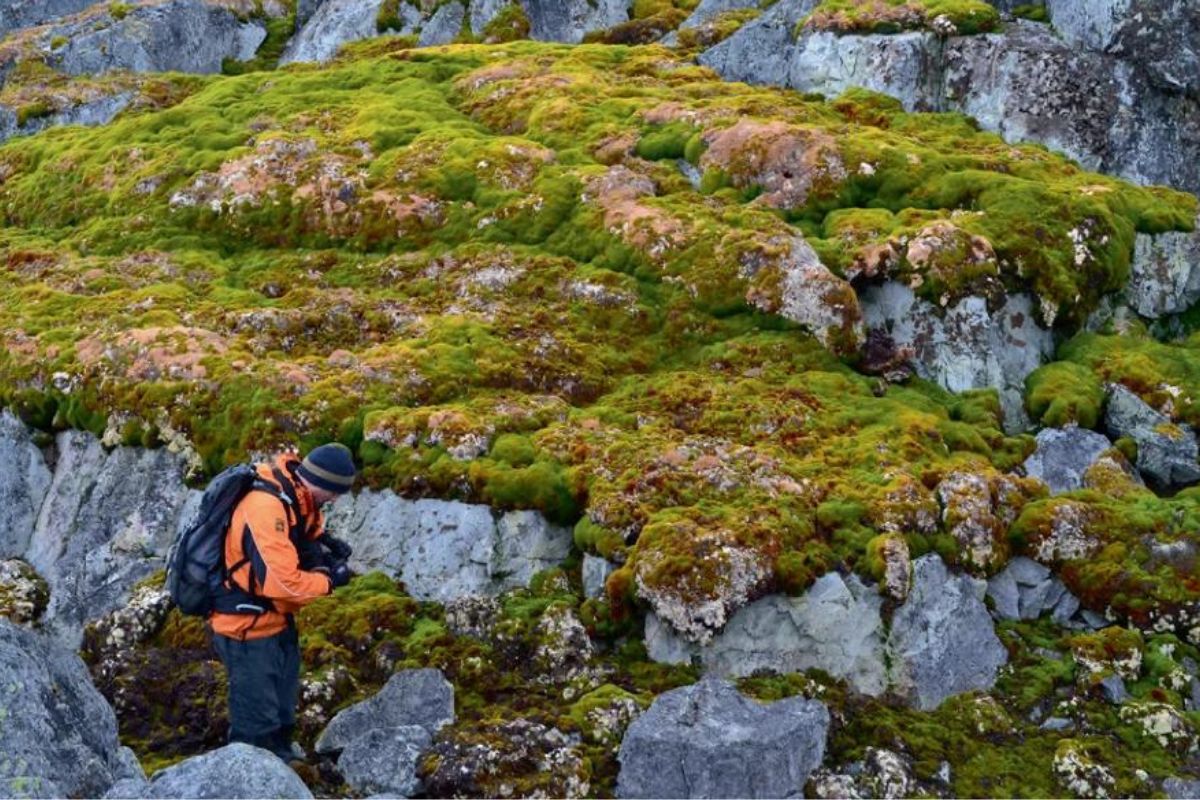This is explained by a study conducted by the University of Exeter and published in the scientific journal Nature Geoscience on 4 October

@Nature
Antarctica, the white continent, is changing color.
It has expanded tenfold in Antarctica over the past 40 years. Yes, you read it right-once a purely white stretch of ice and snow at the South Pole now has patches of green vegetation, most prominently moss, taking hold. While this might seem an incidental observation on first glance, it speaks volumes to the reach of climate change deep into those regions of our planet thought to be remote.
Vegetation on Antarctica has, in fact, grown from less than 0.4 square miles in 1986 to almost 4.6 square miles in 2021, according to “Sustained greening of the Antarctic Peninsula observed from satellites”, a study published by a team from the University of Exeter in Nature Geoscience. The trend has accelerated in recent years, with things getting worse faster than they were previously thought to be. But what does that actually mean for the frozen continent and for the rest of our planet?
The green metamorphosis of the South Pole
A research team led by Thomas Roland closely watched changes in the Antarctic Peninsula landscape with the help of satellite imagery. Between 1986 and 2021, areas of land that were free of ice–places where vegetation had taken hold–expanded significantly. That greening became especially pronounced from 2016 to 2021, with annual changes above 164 square miles, well above the 40-year average of 122 square miles.
What, then, is growing in Antarctica? Mosses and lichens. These plants are some of the hardiest on Earth, able to thrive under conditions that would readily challenge almost any other form of plant life. These organisms find suitable grounds in the coastal regions where, with the already increasingly mild temperatures, they can grow and reproduce at rates previously unknown.
The key to the change is here. “The Antarctic landscape is still largely dominated by snow, ice, and rock“, says Thomas Roland. Yet, “the small fraction colonized by plant life has increased substantially, demonstrating that even this immense and isolated region is no exception to human-induced climate change.”
How global warming is turning Antarctica green
Antarctica has been termed one of the fastest-warming areas on Earth. According to the National Snow and Ice Data Center-or NSIDC for short-the continent is getting rid of more ice cover. This past winter in the Southern Hemisphere, the South Pole had recorded one of the lowest sea-ice extents, covering only 6.64 million square miles-about 0.6 million square miles less than the historical average.
Besides the melting ice, rising temperatures are also promoting the spread of vegetation. For example, in 2022, Antarctica saw an unprecedented heat wave with temperatures almost 70°F above average. That means areas in the frozen continent that were previously sterile for plant life become a hotbed of mosses and lichens.
The future of vegetation in Antarctica
And that is not all, because with higher temperatures, the allowance of moss and lichen growth might unlock the gateway to non-native plant species, which could alter the nature of the Antarctic ecosystem in pretty fundamental ways. According to Olly Bartlett of the University of Hertfordshire, new soil formation from the accumulation of organic matter by these plants allows invasive species to take root, carried by tourists, scientists, or other human activities on the continent.
As we know, the introduction of non-native species can create significant ecological imbalances, which threatens native species and disturbs the fragile balance of the Antarctic environment.
